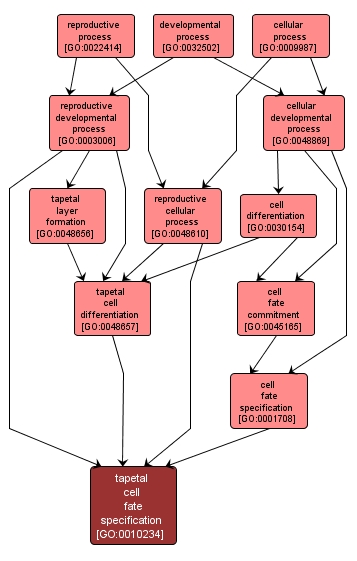GO TERM SUMMARY
|
| Name: |
tapetal cell fate specification |
| Acc: |
GO:0010234 |
| Aspect: |
Biological Process |
| Desc: |
The process by which a cell becomes capable of differentiating autonomously into a tapetal cell of anthers in an environment that is neutral with respect to the developmental pathway; upon specification, the cell fate can be reversed. |
|

|
INTERACTIVE GO GRAPH
|














